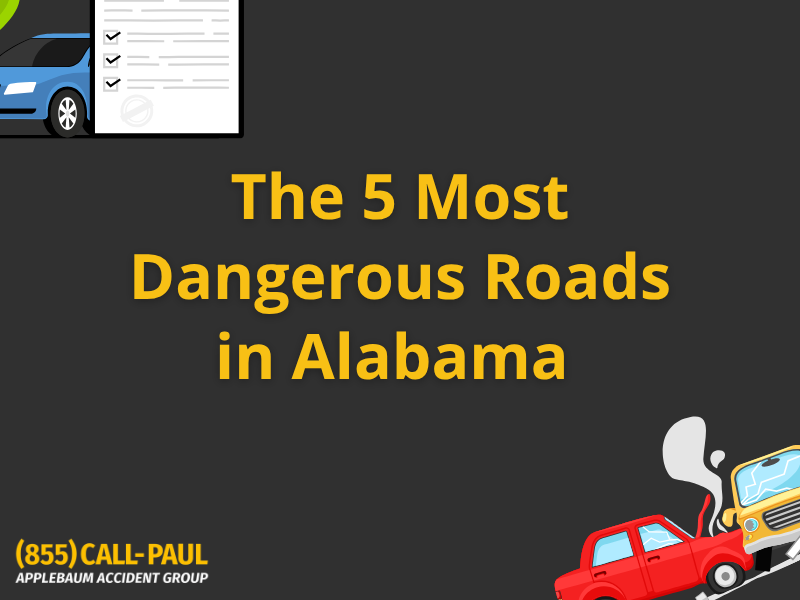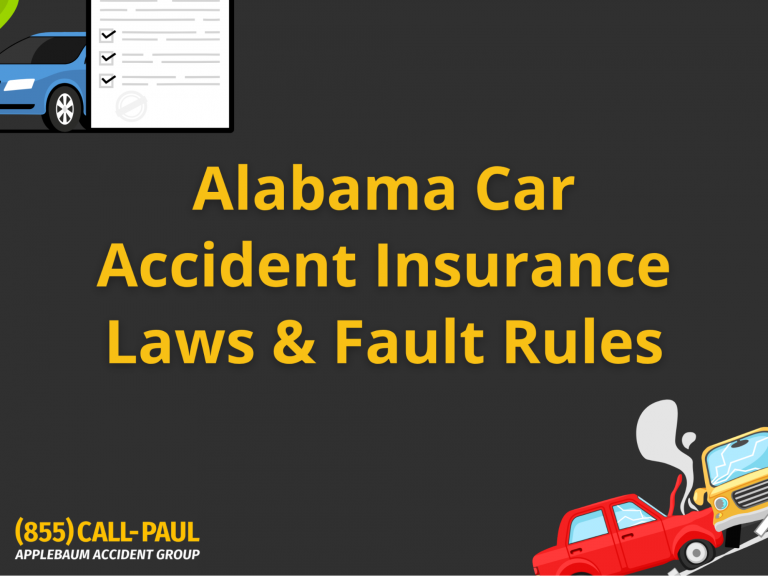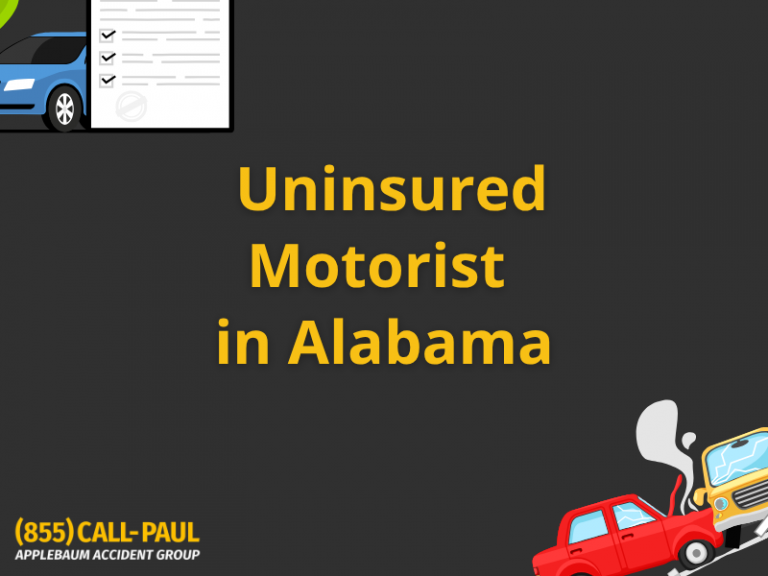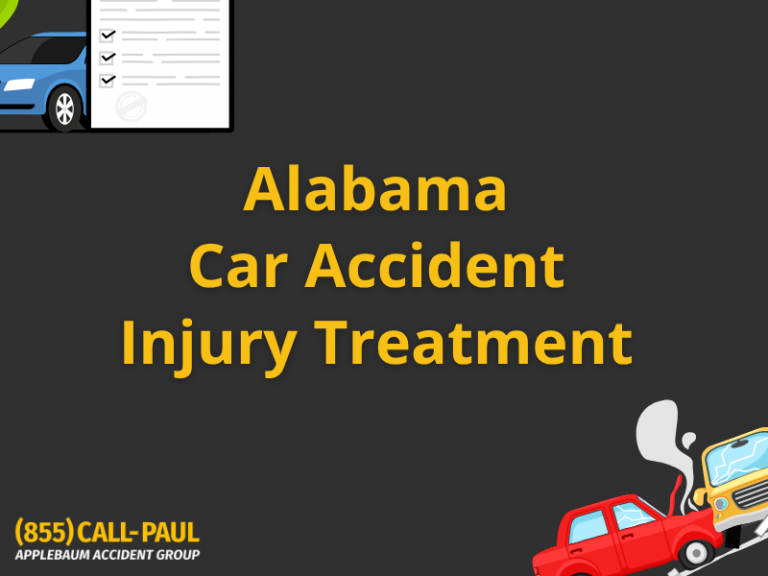The most dangerous road in Alabama is U.S. Route 431, often called the “Highway to Hell” due to its high fatality rate, steep hills, and poor visibility. Other top hazardous roads include I-65, I-20, and Hwy 280, plagued by congestion, weather risks, and reckless driving behavior.
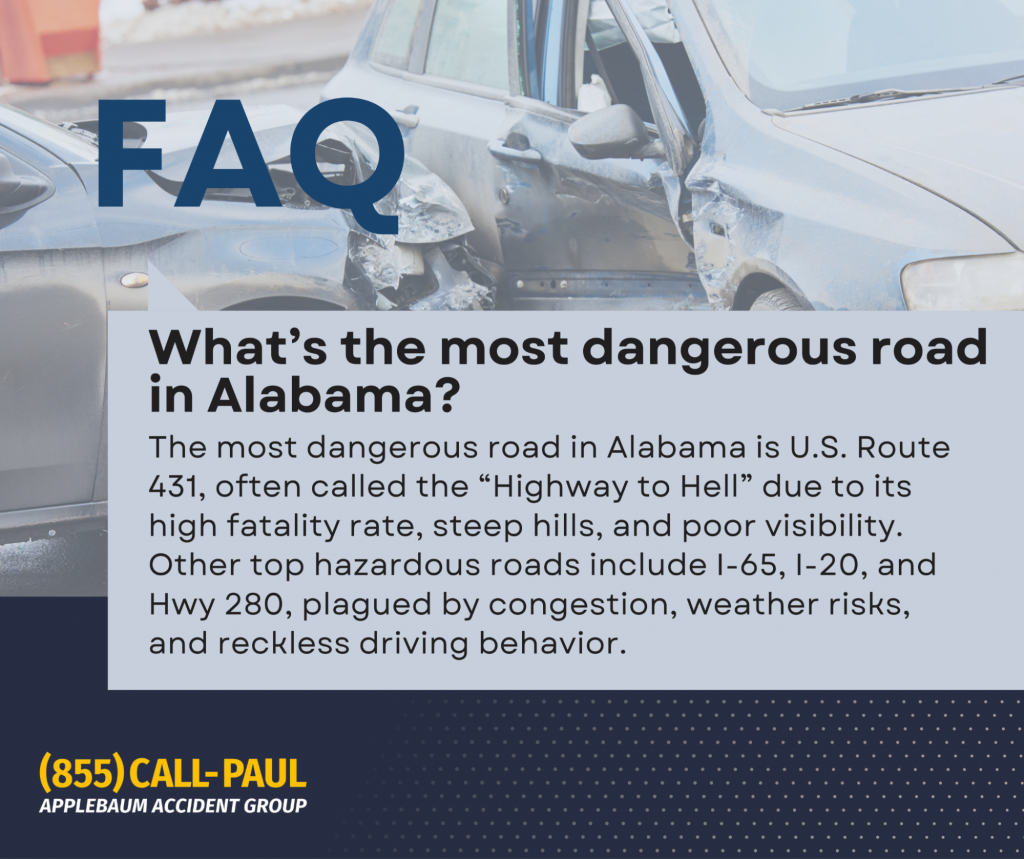
If you live in or travel through Alabama, these routes pose serious risks, especially at night or in poor weather. Congestion, outdated infrastructure, and aggressive driving behaviors only make things worse.
Fatal accidents occur in the state roughly every 9 hours, and some rural highways still lack basic safety features like lighting, median barriers, or guardrails.
If you’ve been injured, or someone you love has been, on one of Alabama’s dangerous roads, Applebaum Accident Group can help you find a responsive attorney and trusted medical professionals. We connect accident victims with the support they need to recover and get justice, fast.
Want the full breakdown of why these roads are so hazardous, and how to stay safe or take action after a crash? Keep reading.
The 5 Most Dangerous Roads in Alabama (and Why Drivers Fear Them)
1. US 431 – “Highway to Hell”
With one fatal crash every 14 miles, U.S. Route 431 has earned its chilling nickname. This four-lane divided highway is riddled with blind curves, narrow bridges, and steep inclines. Drivers often encounter abrupt drop-offs and minimal shoulder space, conditions that make this route especially deadly after dark or during wet weather. Locals say it feels like you’re “white-knuckling the wheel the whole way.”
2. I-65 – The Congested Death Trap
Running through Birmingham, Montgomery, and Mobile, I-65 is Alabama’s most traveled, and most fatal, interstate. Congestion is intense, particularly where the highway narrows from four to two lanes near Pelham. Rain tends to pool on the downhill stretches, increasing the risk of hydroplaning and multi-car pileups. Many drivers avoid it entirely during peak hours.
3. I-20 – “Bloody 20”
Between Leeds and Pell City, I-20 has become infamous for deadly pileups. The mix of steep terrain, unpredictable weather, and slow-moving trucks forces cars to switch lanes aggressively. Visibility drops fast during storms, and traffic routinely bottlenecks in unexpected spots. For many, it’s a road they only take if they absolutely must.
4. Hwy 280 – Chaos in Central Alabama
From Auburn to Birmingham, Highway 280 is a tangle of busy intersections, lane changes, and inconsistent speed zones. During morning and evening rush hours, traffic is bumper-to-bumper, and unpredictable. “Rush hour? More like crash hour,” one commuter noted. Lack of dedicated turn lanes at key junctions makes it even worse.
5. Morgan Road & Airport Blvd
Though not interstates, these urban corridors are among Alabama’s most crash-prone. Morgan Road suffers from poor signage and frequent stops. Airport Boulevard in Mobile is packed with commercial driveways and merging traffic, leading to sudden stops, fender benders, and pedestrian hazards.
Five Key Patterns Behind Alabama’s Road Risks
Accidents in Alabama aren’t random, they follow predictable, often fixable, patterns:
- Limited visibility caused by trees, hills, and poor lighting
- Abrupt lane transitions, especially from 4 to 2 lanes
- Distracted, impatient, or aggressive drivers
- Minimal roadside safety features like guardrails and barriers
- Speed limits that change too often, confusing even local drivers
What Drivers Fear Most on Alabama Roads
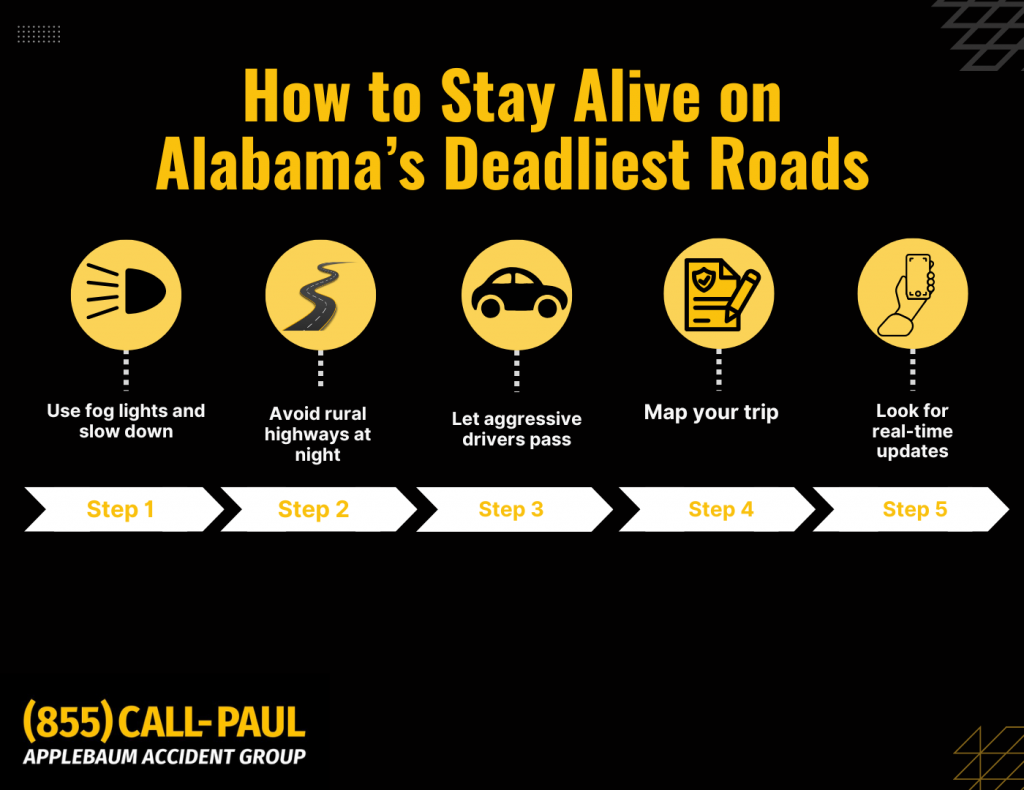
Statistics explain the danger. But the lived experience? That’s where fear sets in.
- Night driving without lights: Many rural stretches of I-65 and Hwy 231 have no lighting at all, making even short drives unnerving after sunset.
- Tailgating trucks in the rain: Semi-trucks barreling down steep grades on I-10 and I-20 often follow too closely, especially in wet weather.
- Left-lane campers and sudden weavers: Aggressive lane-switching and drivers blocking fast lanes create dangerous chain reactions during high-volume hours.
- No pull-off zones: After a crash or a tire blowout, some roads offer nowhere safe to stop, leaving vehicles stranded in live lanes.
- Slow emergency response times: In rural counties like Cherokee or Tallapoosa, EMS arrival can take 30+ minutes, when seconds count.
Hit by a Crash on One of Alabama’s Deadliest Roads?

You don’t need to figure this out alone.
Whether you were rear-ended on I-20, sideswiped on Hwy 280, or injured during a rollover on US 431, Applebaum Accident Group can connect you with the right professionals, fast.
Here’s how we help:
- Legal Connections: We match you with attorneys who are not only top-rated, but who also specialize in your kind of accident.
- Medical Support: We’ll connect you with doctors who understand accident-related trauma and the documentation needed to support your case.
- Responsive Communication: You won’t be left guessing. We guide you at every step and respond when it matters most.
We’re not a law firm. We’re your first call after a crash, especially on Alabama’s most dangerous roads.
📞 855-225-5728 | Request An Appointment
Don’t wait. The sooner you act, the stronger your case, and your recovery, can be. Applebaum Accident Group is here to help.
What Readers Are Asking (And What You Need to Know)
Which Road Has The Most Accidents In Alabama?
Interstate 65 tops the list. Its high traffic volume and bottlenecks near urban areas make it especially dangerous for drivers.
What Kind Of Road Is U.S. 431 In Alabama?
It’s a four-lane divided highway, but don’t be fooled. With sharp curves, steep grades, and minimal shoulders, it’s one of the most dangerous roads in America.
How Bad Are Alabama’s Roads Really?
Pretty rough. In 2022 alone, nearly 1,000 fatalities were recorded statewide, roughly one crash every three minutes. For Alabama drivers, it’s often not a matter of if, but when.
What Is The Deadliest Road In The U.S.?
U.S. Route 1 in Florida leads in total fatalities, but U.S. 431 in Alabama consistently ranks among the top five due to its poor design and frequent deadly crashes.

